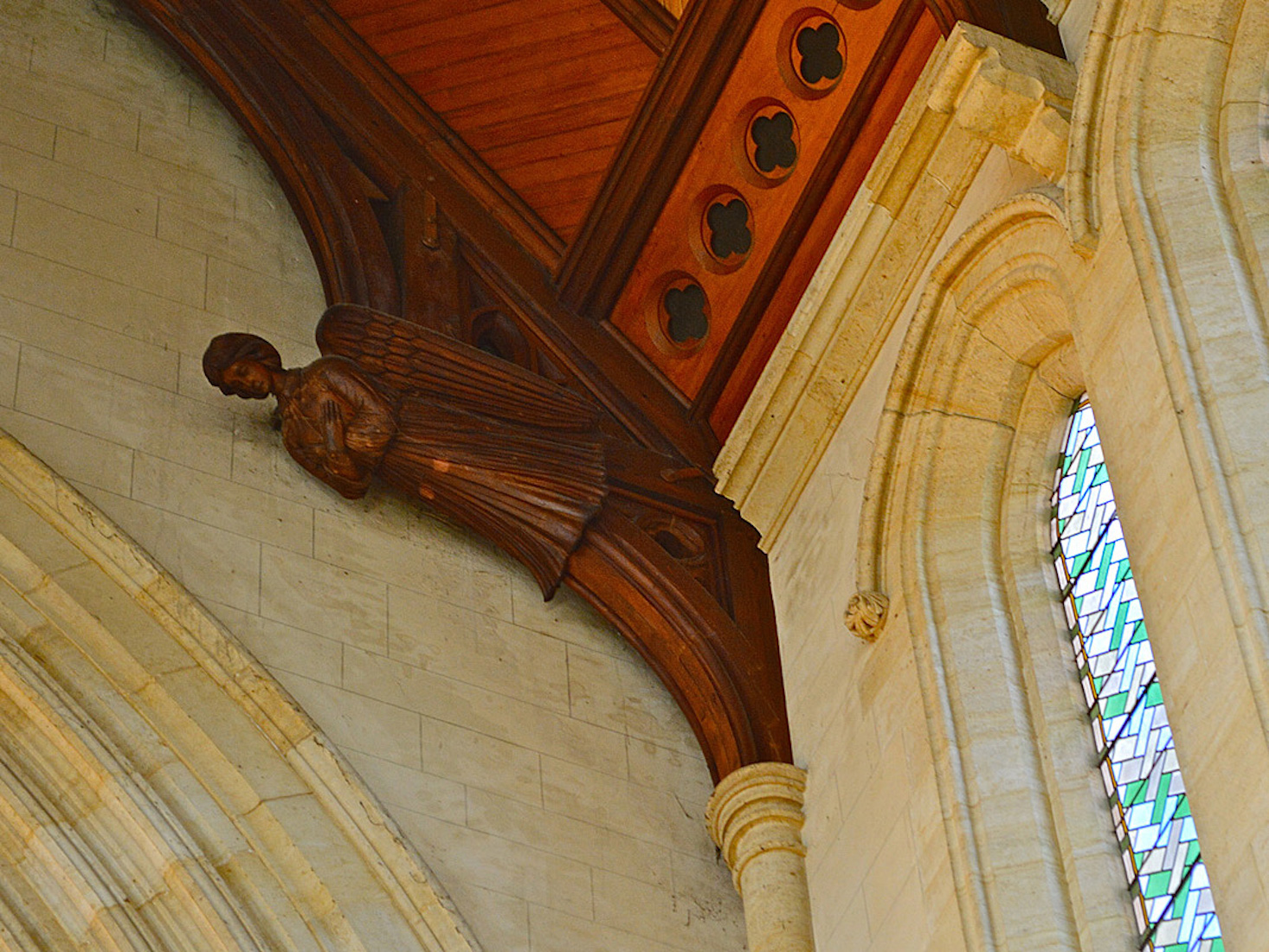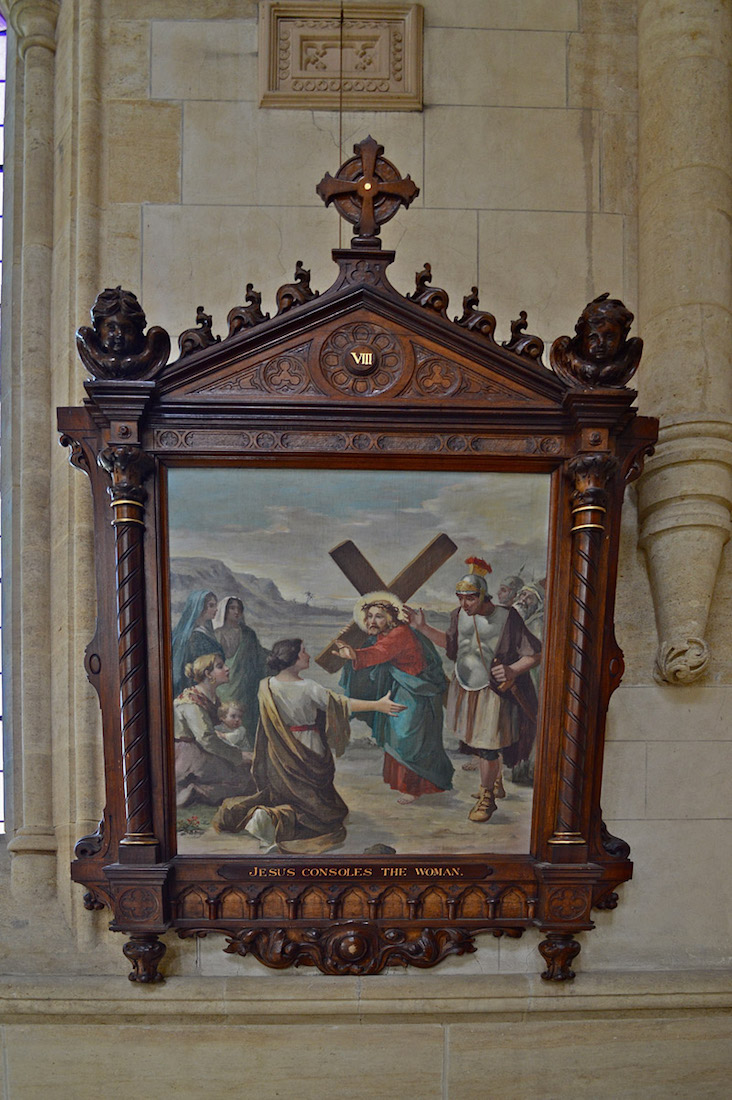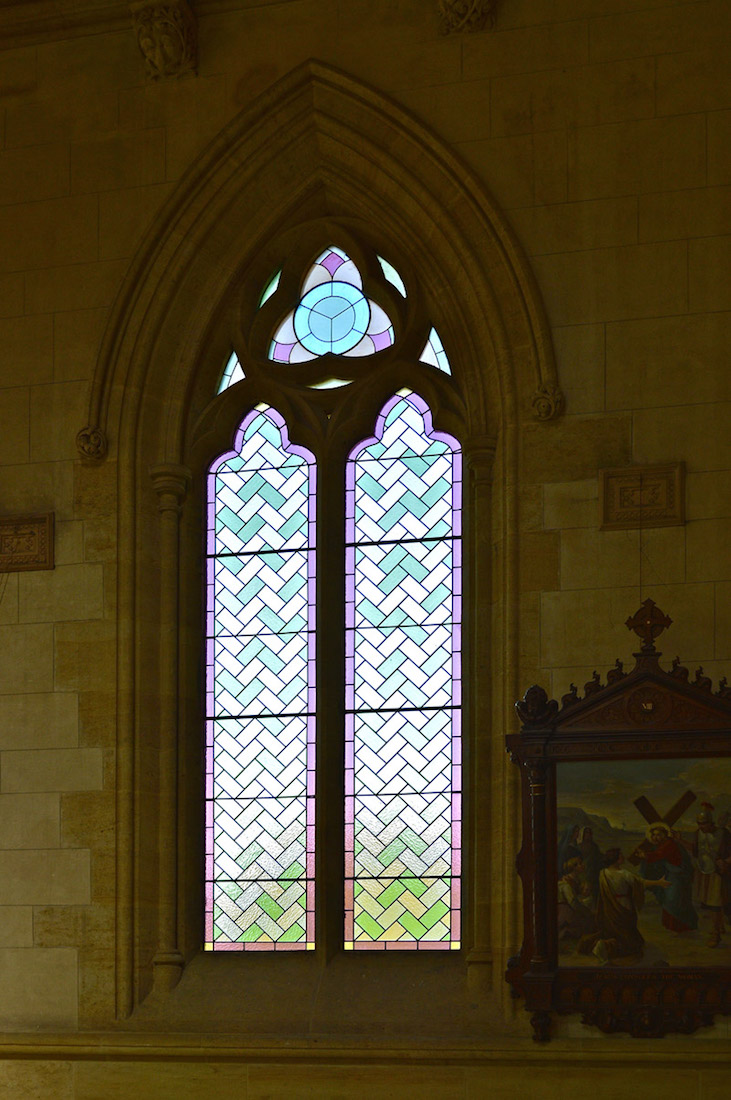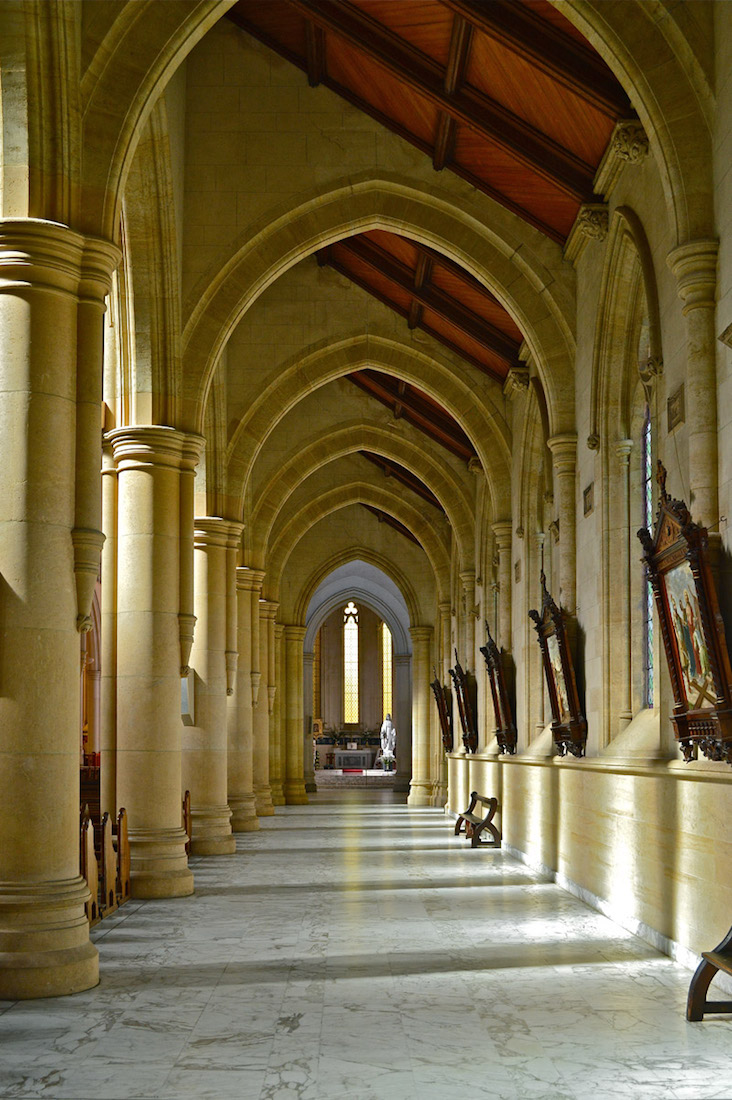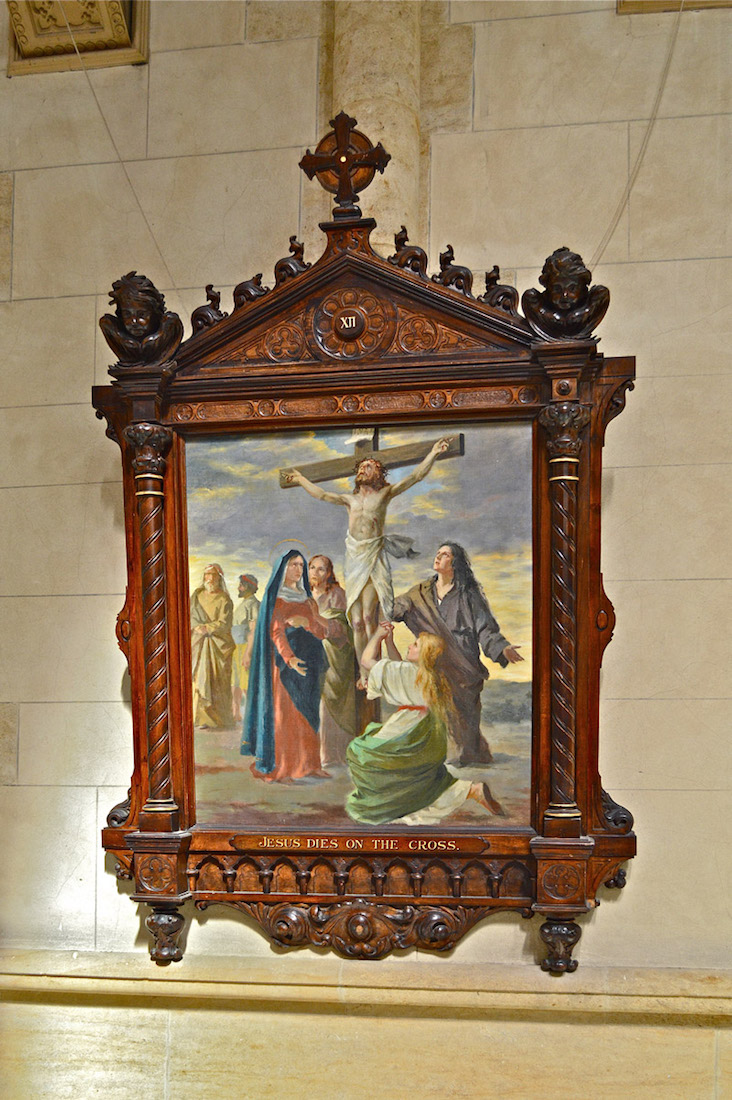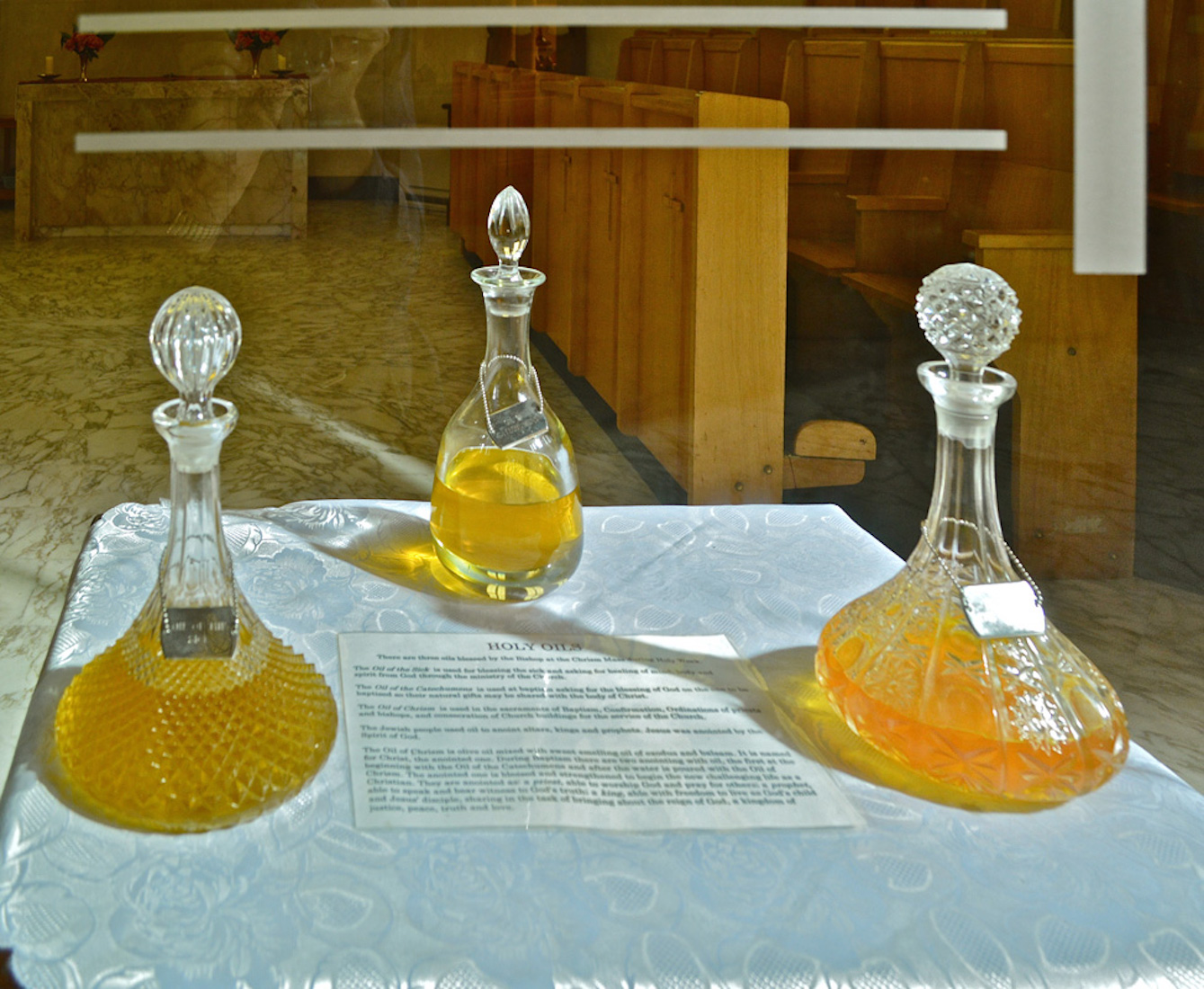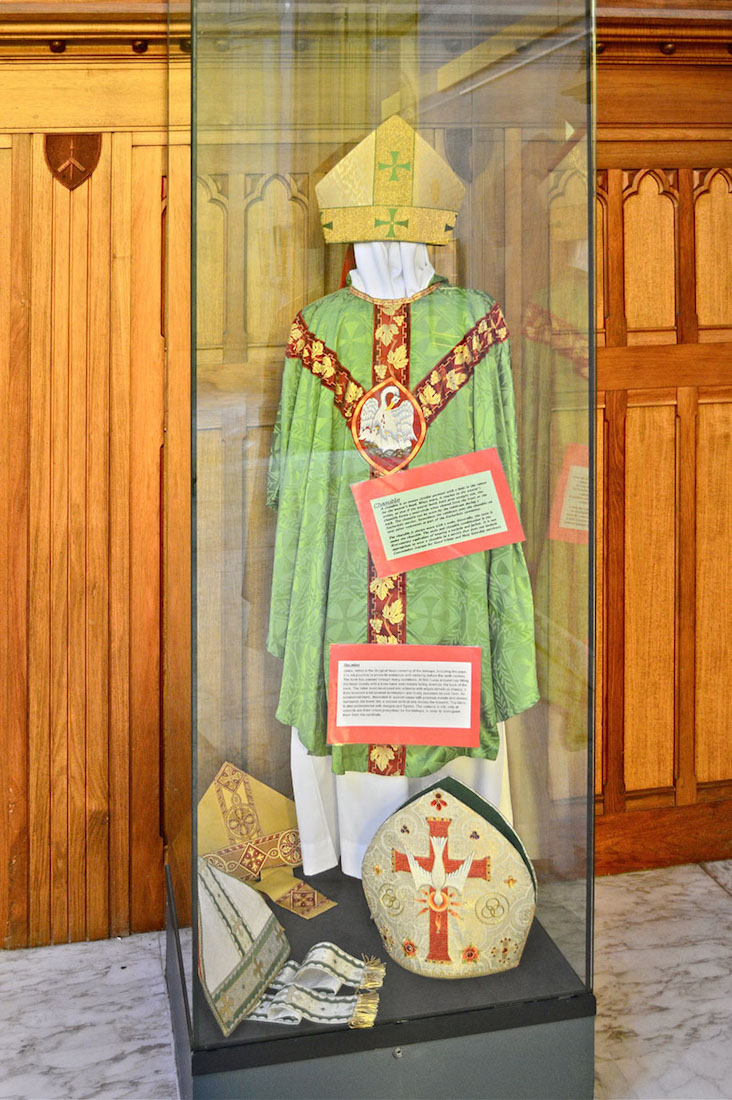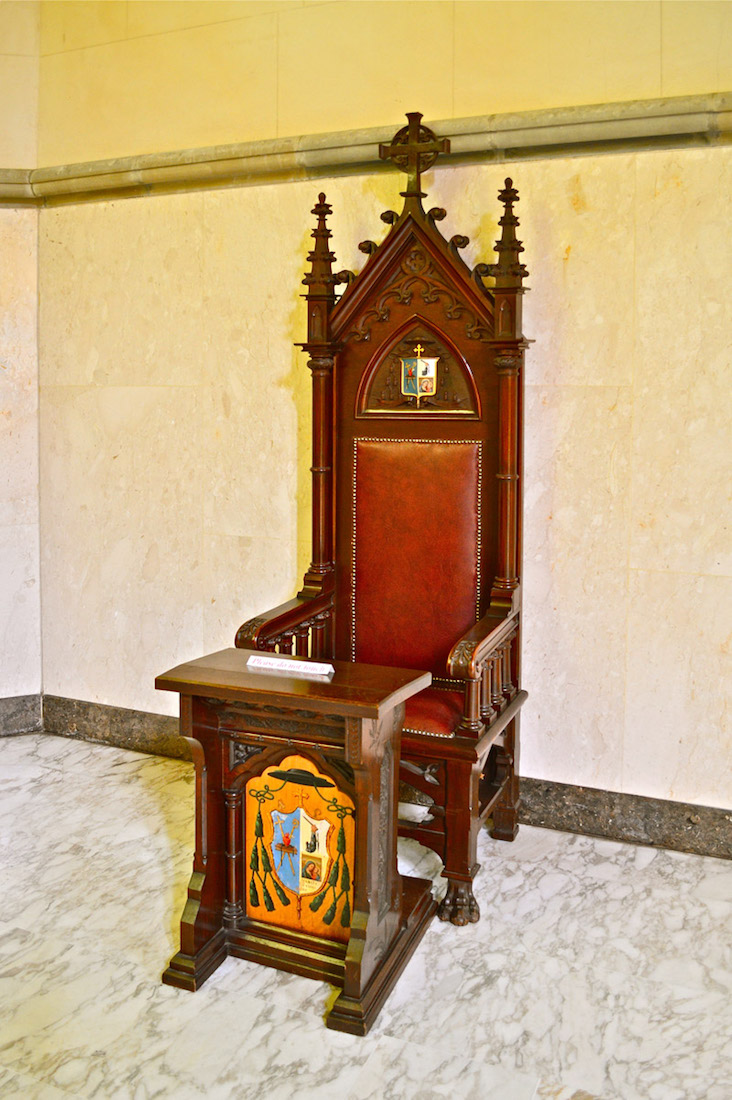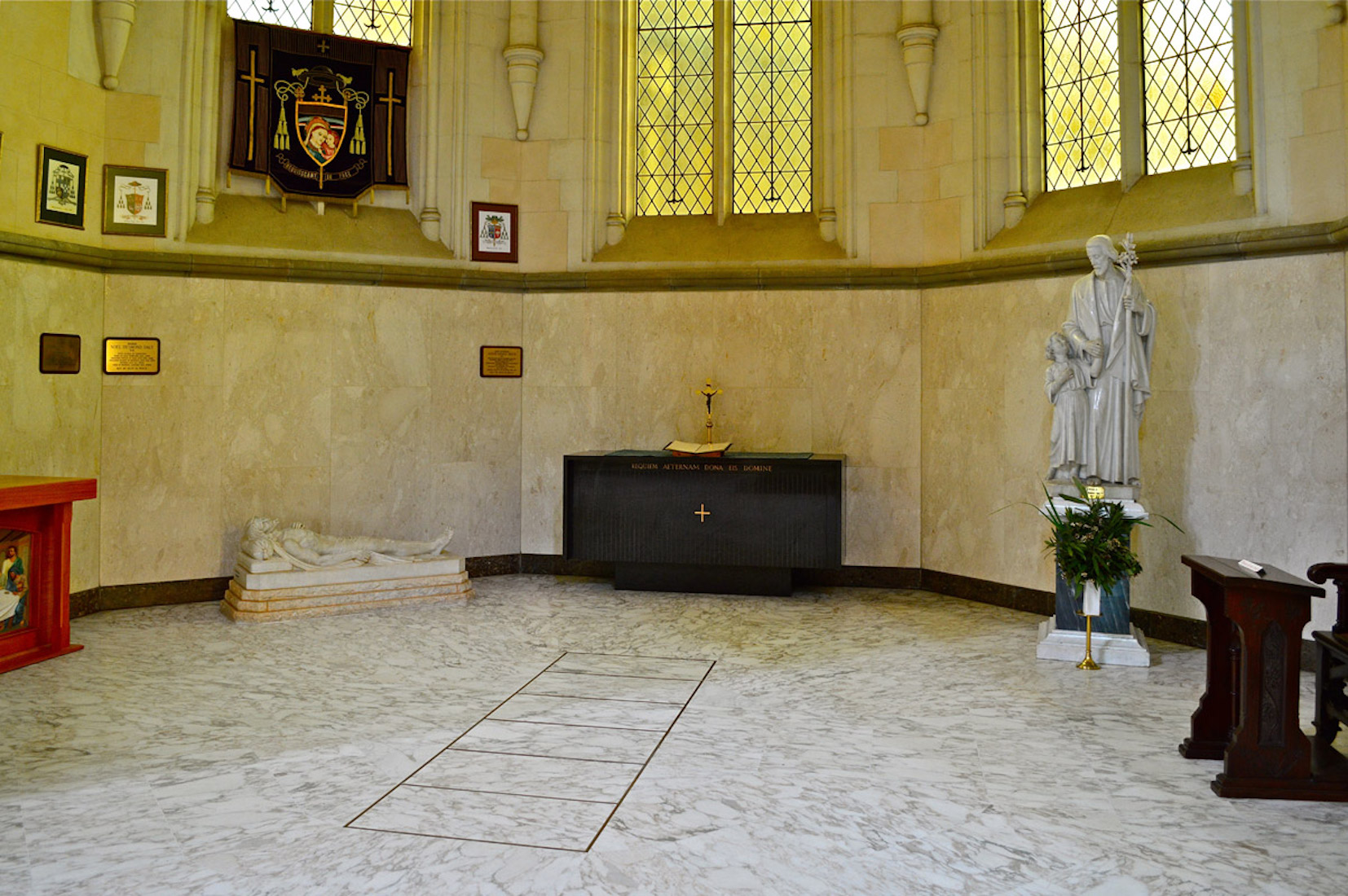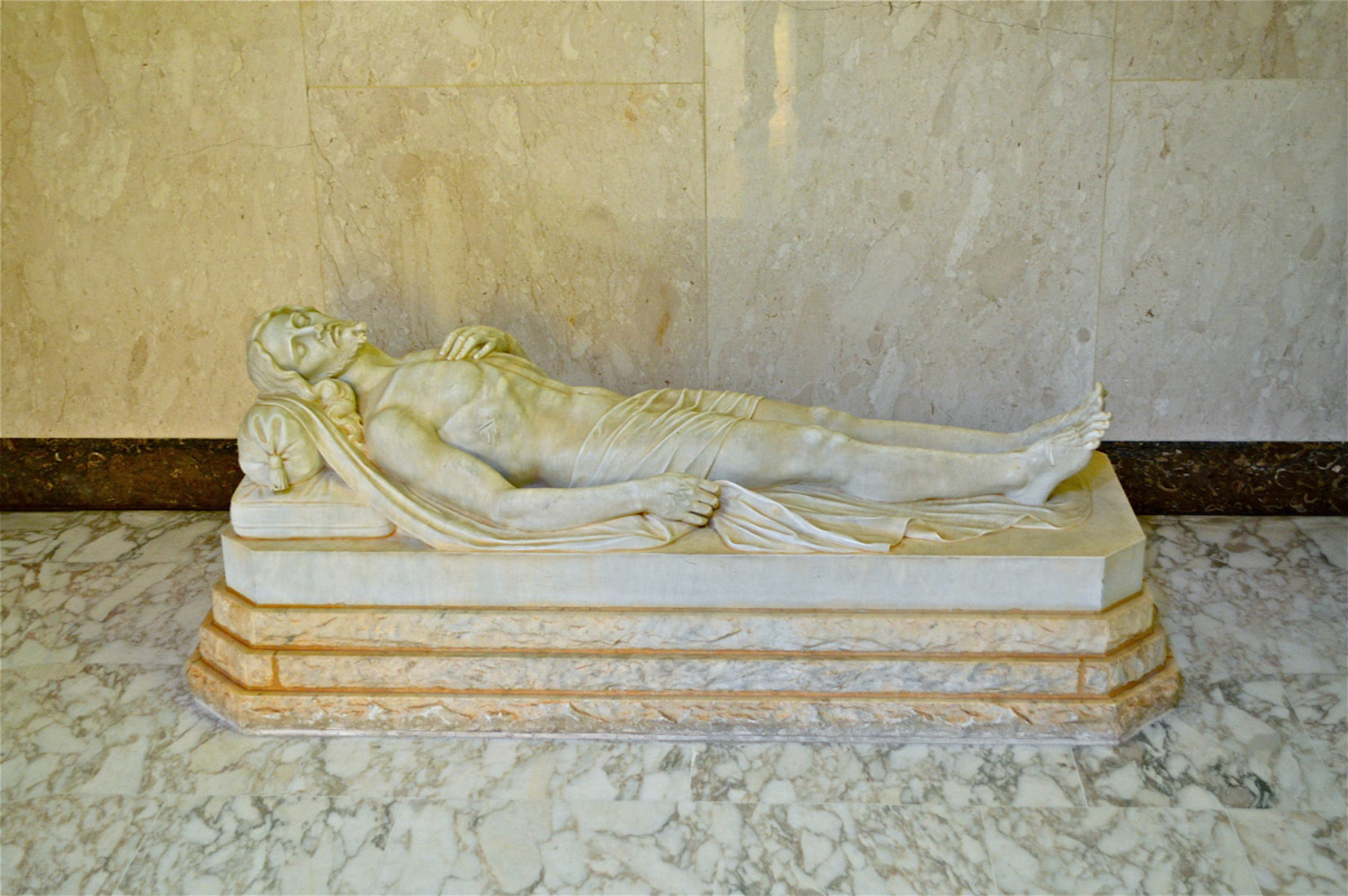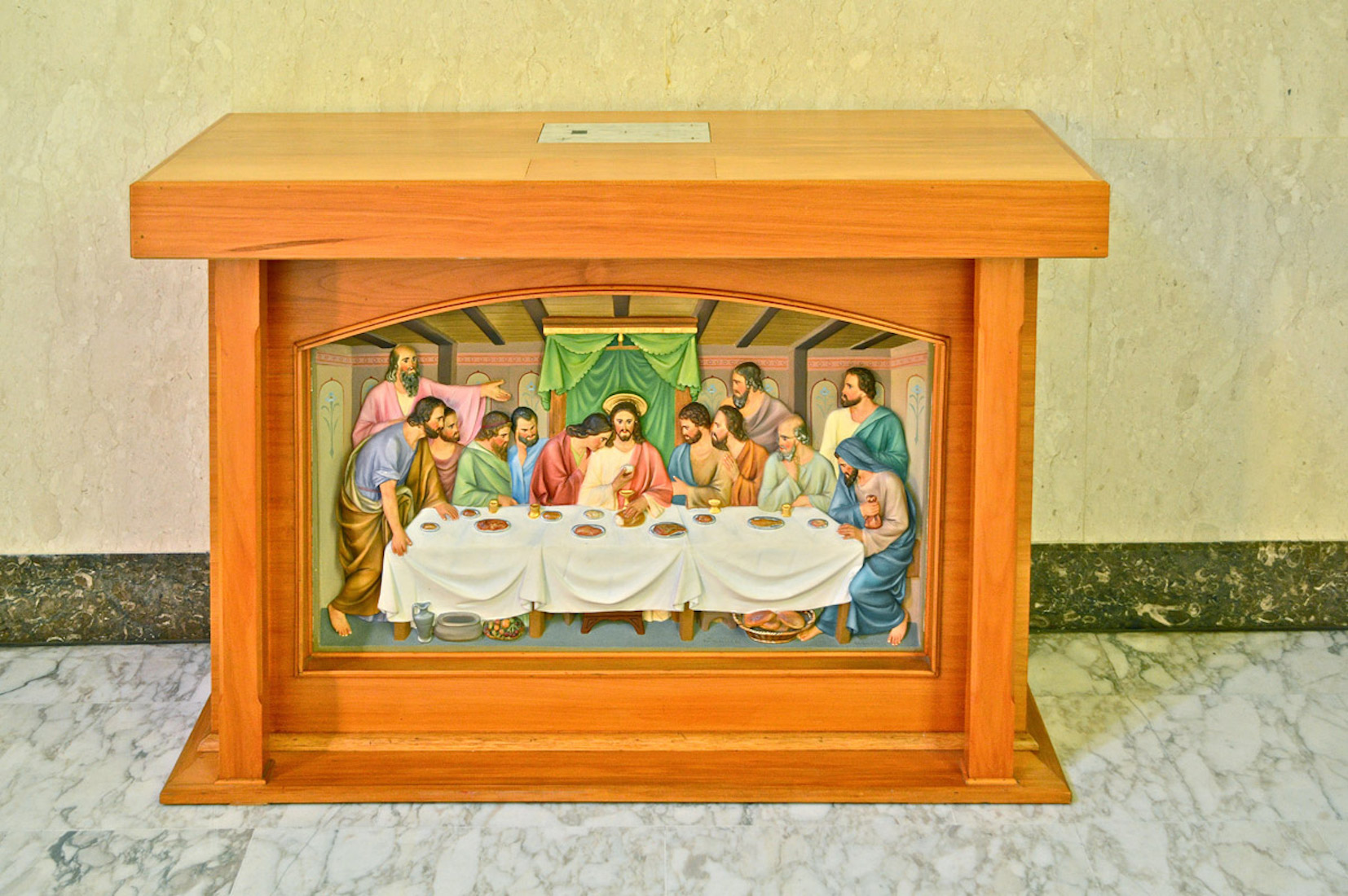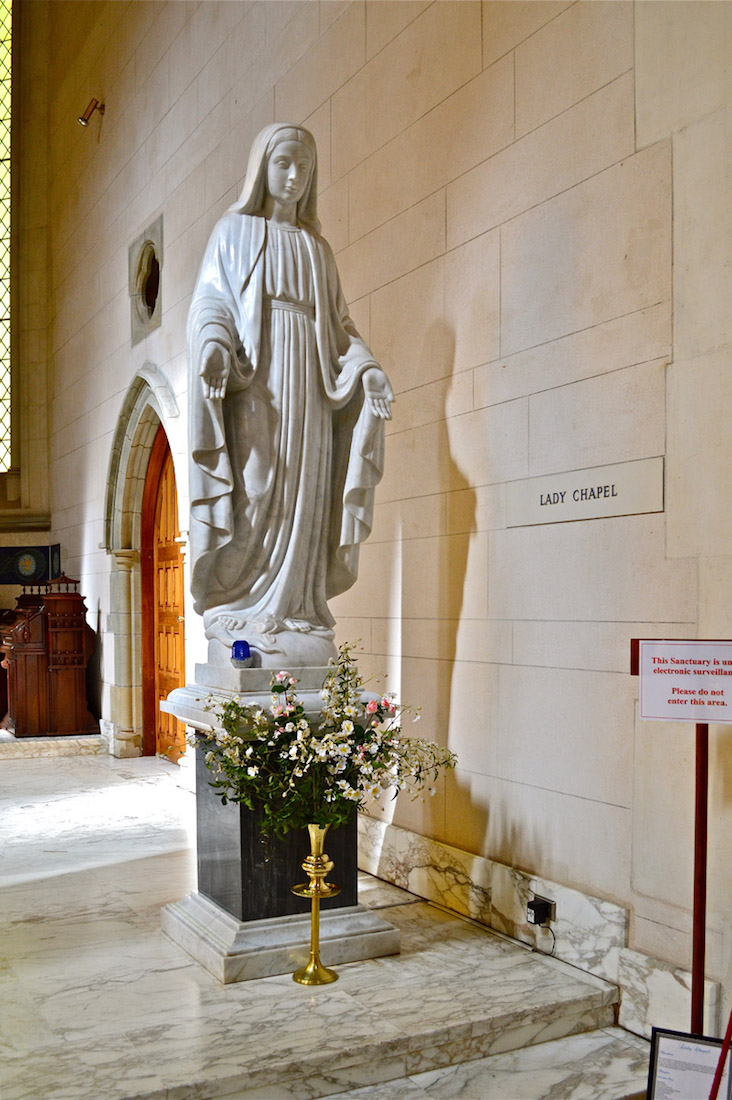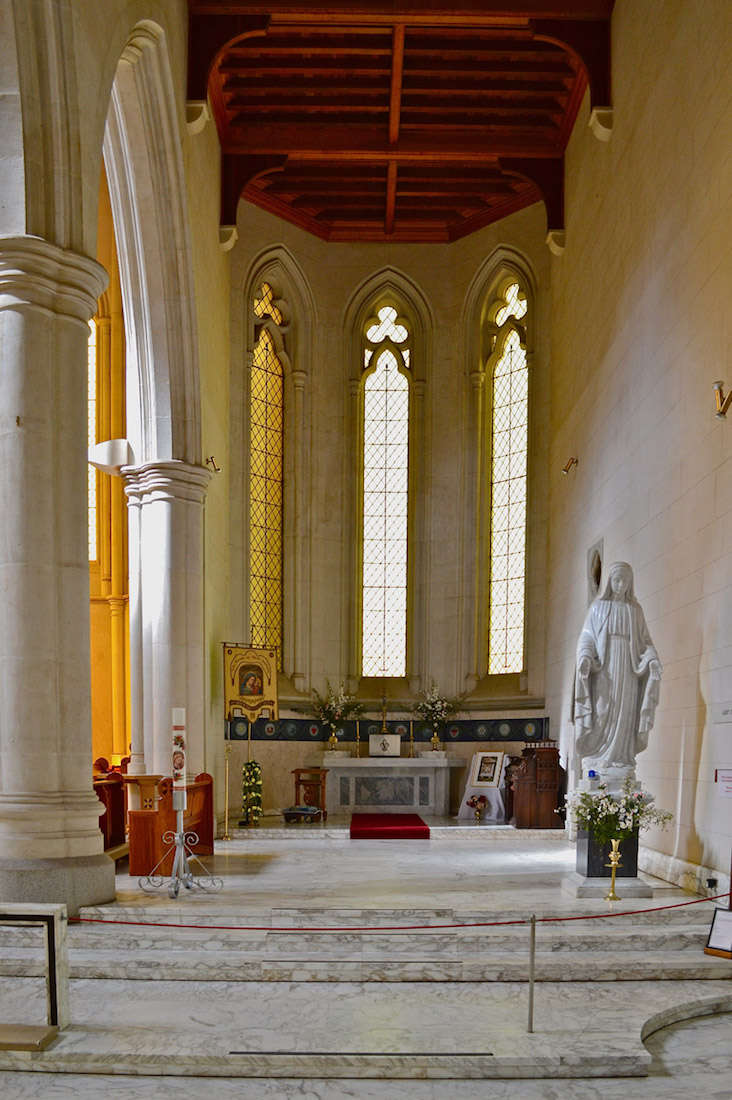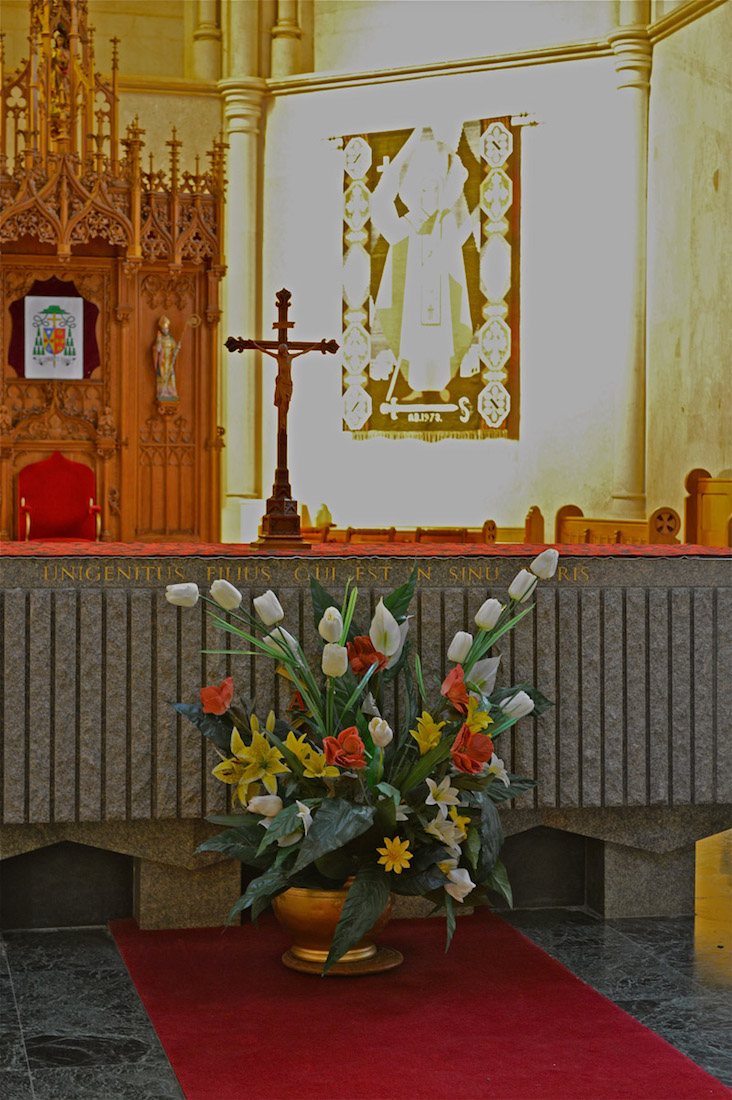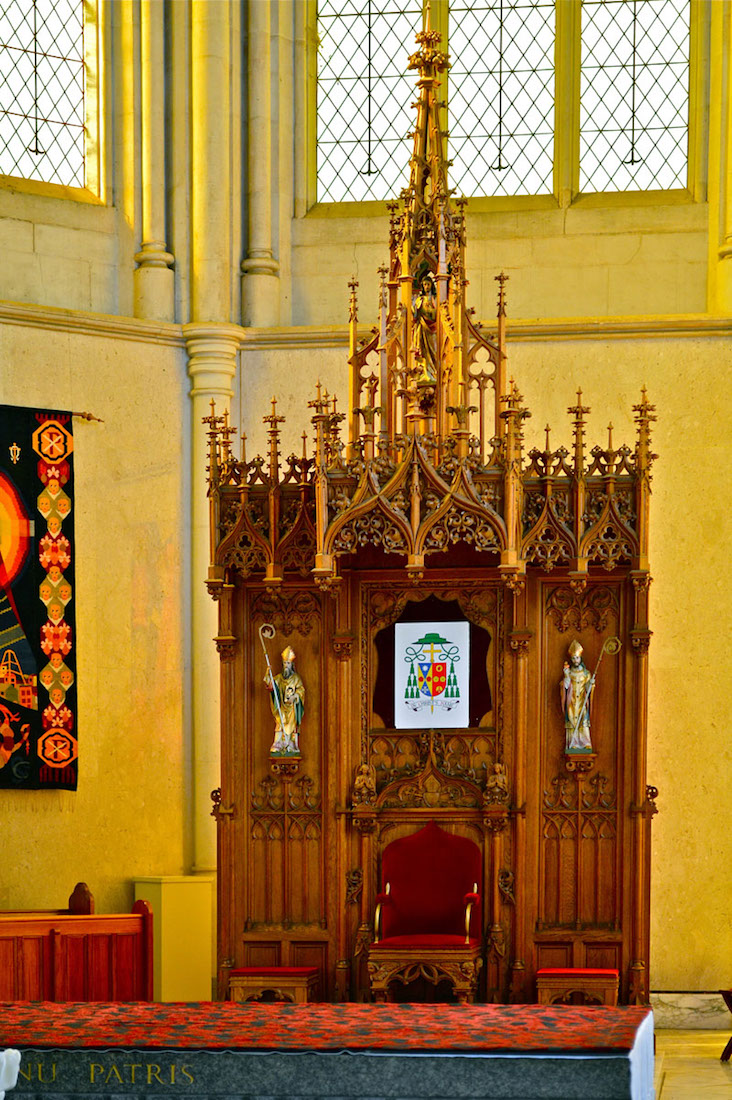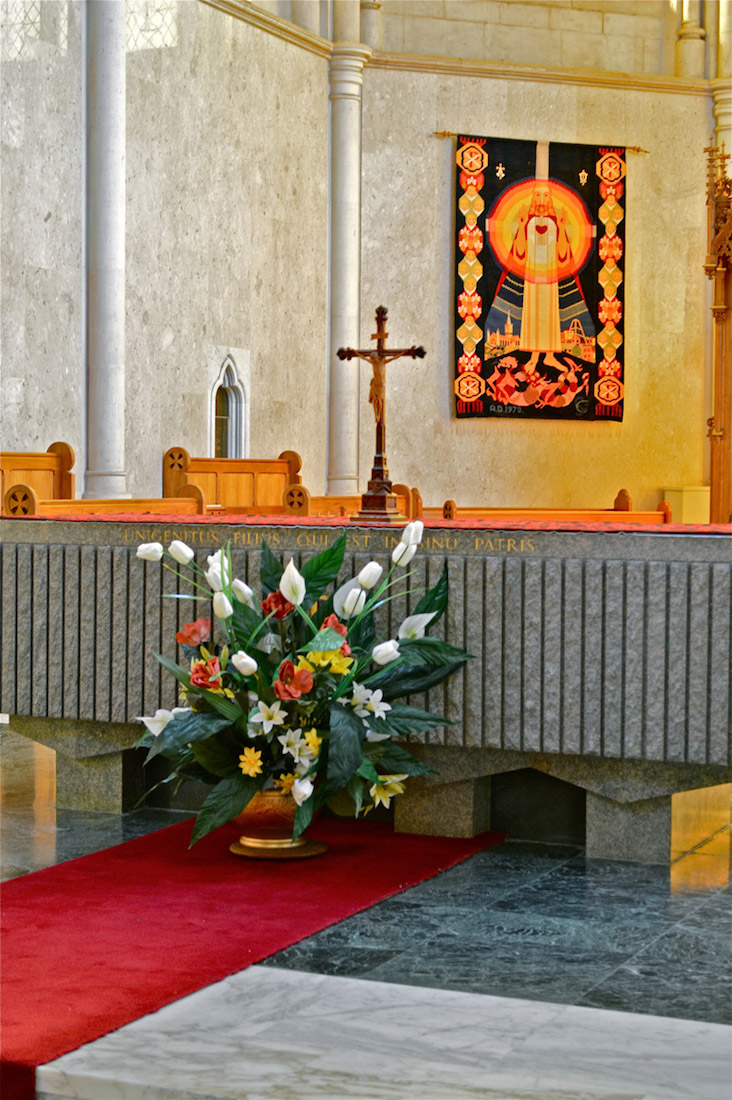22. NAVE PAINTING
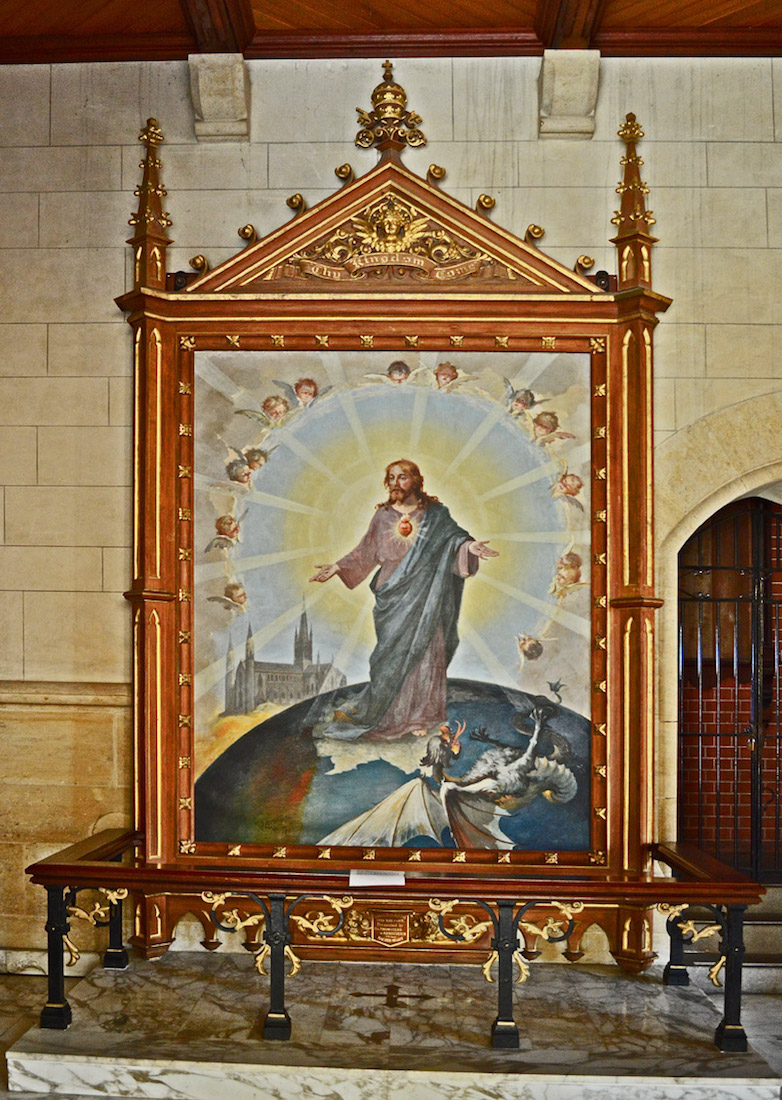
This large painting of the Sacred Heart in the Narthex was painted by A. F. D. Cavallaro who arrived in Australia from Italy in 1899. Originally this large picture hung on the false wall at the end of the Nave above the High Altar, looking rather small and always looked crooked no matter what one did to straighten it.
23. STATION OF CROSS
The nave walls are lined with the 14 Stations of the Cross. These were painted by A. F. D. Cavallaro, an Italian painter who came to Australia in 1899. One unsubstantiated story is that he shipped the paintings out from Rome and painted Bendigo faces on them when he arrived here. They were installed in the Cathedral in 1902. Here we see Station VIII : Jesus Consoles the Woman.
24. WINDOW
We have already commented on how the Cathedral is suffused with golden light coming through the stained glass windows. Looking closely at a window makes one wonder how this occurs! The Cathedral is certainly a very light and spacious building. The pleasing light and colour reminds us that Christ is our truth and light.
25. SOUTH AISLE
The South aisle of the nave, looking eastward to the Lady Chapel. The stations of the cross line the wall, and we note the solid construction above the Gothic arches, acting as flying buttresses as part of the Cathedral structure.
26. STATION OF CROSS
Another of Cavallaro’s stations of the cross. This is Number XII … Jesus Dies On The Cross. There is one other example of the work of this artist in Bendigo: the frescos in St Mary’s Chapel at the Coolock Campus of Catholic College Bendigo (formerly St Mary’s College – a Mercy school).
27. HOLY OILS
We come now to the Chapel dedicated to St Augustine of Hippo. This is octagonal in shape, and is situated in the South West corner of the Crossing. The Chapel is behind a locked glass screen. Displayed are these three Holy Oils. • The Oil of the Sick, used for blessing the sick and making for healing of mind, body and spirit from God through the ministry of the Church; • The oil of the Catechumens, used at baptism asking for the blessing of God on the one to be baptised so their natural gifts may be shared with the body of Christ; • The Oil of Chrism, used in the sacraments of Baptism, Confirmation, Ordinations of Priests and Bishops, and consecration of Church buildings for the service of the Church.
28. WALL HANGING
Hanging in the Augustine Chapel is the Diocesan Quilt. This was a project to show the unity of the Diocese during the great 2000 Jubilee Year. Each Parish designed and created a square. A list of the Parishes can be found at
http://www.sandhurst.catholic.org.au/index.php/parishes5
I counted 40, which matches the squares on the quilt. The altar in the Augustine Chapel bears the inscription: Tolle lege (Take up and read).
29. COPE
St Augustine’s Chapel was dedicated by Bishop John Kelly, Melbourne Auxiliary. ‘A memorial to the Augustinian bishops Crane and Reville’. Martin Crane (1818 – 1901), an Irish-born Australian suffragan bishop, was the first Roman Catholic Bishop of the Diocese of Sandhurst, serving between 1874 until his death in office in 1901. In 1885 Stephen Reville was ordained as Coadjutor Bishop to Dr. Crane. For the next sixteen years he would bear a great deal of the responsibility of the Diocese of Sandhurst. Finally, in 1901 he succeeded as Bishop of Sandhurst. The chapel has a display of Bishops’ regalia.
30. CHRIST ICON
In the South transept, we find this ‘icon’ of Christ. The script on the Icon reads ’Let the light of your face shine on us, O Lord’. A tray of candles is set before the Icon to encourage prayer. The South transept is small, with wall space taken up by the exit door and the adjacent chapels.
31. SMALL BISHOP’S CHAIR
This small cathedra housed in the Burial Chapel is thought to be the original Bishop’s chair coming to this Cathedral from St Killan’s pro-cathedral, and used until 1914.
32. ST JOSEPH CHAPEL
A general view of St Joseph’s (Burial) Chapel, situated in the South East corner of the crossing. This octagonal chapel was dedicated by Bishop Arthur Fox from Sale. ‘A memorial to the men and women of religious orders involved in education and charity.’ Notice the panels in the floor. In the crypt under this chapel are buried four former bishops of Sandhurst, their names are displayed on the plaques. The crypt is accessed by lifting the marble panels in the centre of the floor. It is about three metres deep and the same width as the chapel above it. The coffins are placed and sealed in niches in accordance with local health regulations. The altar is made of black granite from South Australia.
33. JOSEPH AND JESUS
This statue of Joseph and the boy Jesus stands in the St Joseph Chapel. Joseph holds a staff with lilies sprouting out the top – an allusion to an old legend in which this signified that he had been Divinely chosen.
34. POST CRUCIFIXION
Also in the Burial Chapel is this statue representing the buried Christ. It was previously located at St Aidan’s Orphanage.
35. LAST SUPPER
This curious altar has an attractive inset creation of The Last Supper; another altar like can be found in the St Joseph Chapel.
36. INTO LADY CHAPEL
Leaving the St Joseph Chapel, we move to the Lady Chapel, South of the altar area. This statue of Our Lady was sculpted by Mariano Fracasso.
37. LADY CHAPEL
The Lady Chapel lies immediately South of the sanctuary area. The altar is made of white Carrera marble. On the front of this altar is a scene by Stanley Hammond depicting the Annunciation. The altar contains relics of Ss Perpetua and Felicity who were from Carthage and killed under the sword ca 203 under Severus. Behind the altar is a grey strip highlighting a set of mosaics designed and created by Anne Graham. The symbols are taken from the Marian Litany of Loretto which is said after saying the rosary. They are in Marian blues, gold and silver. The statue of Our Lady was sculpted by Mariano Fracasso. The Lady Chapel was dedicated by Bishop Francis Xavier Thomas of Geraldton: ‘A memorial to the American men and women who stood between us and annihilation in the dark days of 1941 – 45.’
38. SOUTH SANCTUARY
Moving to the sanctuary area, we come to the main altar. this is the central piece of furniture of the whole Cathedral – the Bishop, Priests, the people all gather round it. It is there the sacrifice of Christ is made present. The consecration of the altar by Archbishop Cahill was a most solemn moment in the Cathedral’s consecration. The inscription on the altar reads: Unigentus fillus in sinu Patris (The only begotten Son who is close to the Father’s heart). The altar contains relics of Ss Marcellinus and Sixtus (St Marcellinus was Pope 293 – 301 AD and beheaded in persecution of Diocletian; St Sixtus (Xystus) was Pope 260 – 261, and martyred in 261 in persecution of Valerian. The tapestry behind (unfortunately not well viewed in bright sunlight!) is of St Kilian, an Irish missionary bishop who was martyred at Würzburg.
39. CATHEDRA
The Bishop’s chair or cathedra is the red coloured chair under the wooden carved canopy, at the far East end of the sanctuary. Symbolically it is the seat from which the Bishop shepherds and governs the Diocese. The Cathedral, in fact, gets its name from this ‘cathedra’ (Greek for seat or throne). The cathedra in this Cathedral is very ornate. It was hand carved from Austrian oak by the Tyrollean wood carver Ferdinand Stufflesser of St Ulrich, Groden early in the 20th Century and installed in 1914. It features three carved and gilded statues. St Patrick and St Augustine occupy niches either side of the Bishop’s coat of arms, with a statue of the Sacred Heart within the canopy above. Each Bishop has the right to his own coat of arms and motto. The present Bishop, Bishop Grech, has chosen as his motto Come Lord Jesus.
40. NORTH SANCTUARY
The tapestry on the wall to the left of the Cathedra was woven by Sonia Carrington-Zakrzewska, as was the tapestry of St Killan. This depicts the Sacred Heart of Jesus. The Cathedral and a poppet head can be seen on it as well as Chinese dragons and gum nuts.


